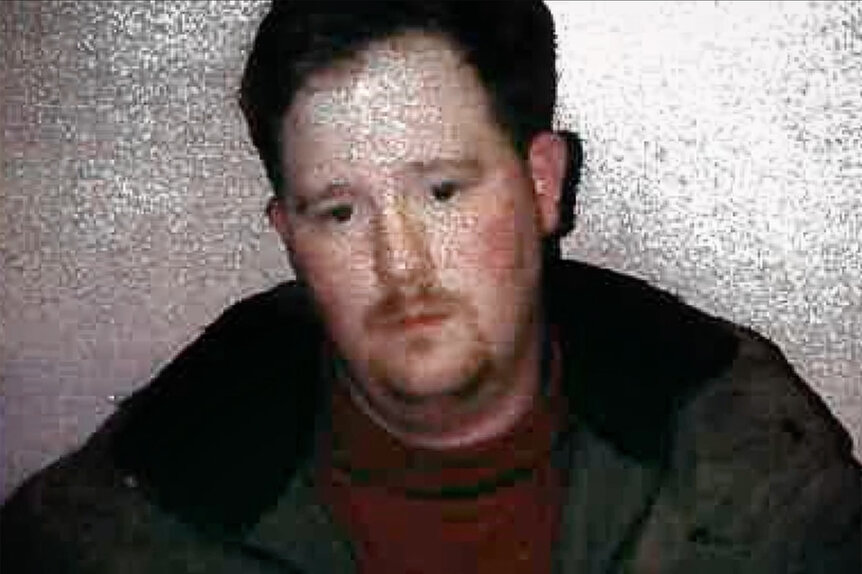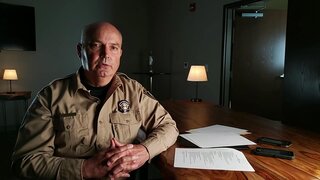Create a free profile to get unlimited access to exclusive videos, breaking news, sweepstakes, and more!
‘This Guy’s A Killing Machine: Police Track Down A Necrophiliac Mass Murderer Terrorizing Detroit
In 2000, Detroit police searched for the deranged serial killer who posed and had sex with his victims.
In the early months of 2000, young women turned up dead at an alarming rate in and around Detroit. As investigators worked the cases, they considered the very real threat of a serial killer.
On January 2, the partially clothed body of a woman was found in the icy Rouge River in Dearborn Heights, outside Detroit. Investigators ruled out suicide and believed she’d been tossed from a bridge.
The intent was “to either harm her, kill her, or dispose of her body,” Don Riley, a retired Dearborn Heights PD detective sergeant, told “Twisted Killers,” airing Thursdays at 9/8c on Oxygen.
At the scene, the victim’s hands were wrapped in plastic to preserve possible DNA evidence and police spoke with the man who reported the body. He claimed he stumbled upon it when he fell ill while driving and stopped his car to vomit.
The story was plausible, although the witness was “squirrelly,” said Elizabeth Walker, retired Wayne County assistant prosecutor. After being interviewed by police, he was released.
On January 3, an autopsy showed that the victim had been strangled. A rape kit was performed. Fingerprints revealed her identity as Wendy Jordan, 39, who’d been arrested previously for soliciting charges in the city of Detroit. Detectives forged ahead, determined to find her killer.
“Unfortunately, we see a lot of sex workers who are victims of killers,” said Beth Karas, former NYC prosecutor. “Often the family is used to having them disappear for long periods of time.”
Leads dried up and investigators hoped rape kit results would push the case forward. In 2000, that took “several months,” said Riley
On April 10, 2000, members of the Violent Crimes Task Force in Detroit received word of a homicide near railroad tracks.
In plain view from the tracks was a woman’s body. Then another woman’s body in the early stage of decomposition was found in a nearby culvert. A third victim, even more decomposed than the others, was discovered.
All three victims had ligature markings around the neck. The official cause of death was determined to be strangulation. Each had been posed in a sexually provocative way.
“We can clearly see that the person that was committing these heinous crimes was the same individual,” said Don Johnson, former inspector for the Detroit Police Department.
The fact that the bodies weren’t hidden “indicates someone wants law enforcement to find these bodies,” said Dr. Kate Termini, a forensic psychologist, adding that it “potentially indicates a person who on some level wants to be caught.”
The women, who’d each had previous arrests, were identified through fingerprints as Robbin Brown, 20, Rose Marie Felt, 32, and Kelly Hood, 34.
Hood’s son was 9 when his grandmother told him his mother was gone.
The killer “had no heart,” a grief-stricken Kyle Cazares told producers. “He left my mother on a train track, discarded her like trash.”
The search for the murderer intensified and the Sex Crimes Unit and the Homicide Unit joined the case. “Our concern was serial killers,” said Gerry Cliff, former commanding officer for the Detroit Police Department. “They tend to escalate so we need to get this guy off the street now. This guy’s a killing machine.”
Detectives thought they’d caught a break when they found a coat near Hood’s body with prescription pill bottles in a pocket. The name matched a man with a violent criminal past and an arrest record.
The promising lead turned into a dead end. The individual passed a polygraph and he was cleared as a suspect.
The FBI’s Behavioral Analysis Unit built a profile of the suspect – a white male who was 25 to 35 years old who “was getting sexual gratification from strangulation,” Johnson told producers
The strangulation was part of the killer’s sexual dysfunction, according to Tracey Benjamin, a retired LAPD investigator. “There’s some guilt,” she said. “There’s some shame that's associated with the sexual act.”
Women who encountered the killer and survived turned out to be invaluable witnesses, including a 22-year-old who had been taken to the railroad tracks and attacked. She escaped and told police that he was a white male with red hair who drove a Jeep and wore an "Eric" name tag.
Another victim, Wilhemina Drane, corroborated those descriptions. A week before the bodies were found she’d accepted a ride from a man who took her to the railroad tracks and attacked her. She fought back and escaped. She observed that he had a tattoo of a tiger on his arm.
Around midnight on April 11, officers pulled over a Jeep. They asked the driver to step out of the vehicle and saw his tiger tattoo. As officers put him in the back of a patrol car, a woman passed by who claimed that the man “tried to kill” her, said an investigator.
In the interrogation he revealed his name was John Eric Armstrong. As the interview proceeded James Hines, a detective with the Wayne County Sheriff’s Office, touched Armstrong’s hand and brought up DNA.
“I said, ‘I just left a little bit of me on you.’ And I said, ‘You know what, we got a lot of you on those girls.’”
Armstrong cracked under pressure. He confessed to picking up the victims, having sex with them, and strangling them with his hands or their tights.
“He told us that he placed the three victims that we had found,” said Johnson. “He positioned them so he could always go back and have sex … He knew that they would always be there.”
Armstrong eventually confessed to the murder of Wendy Jordan. “He wasn't familiar with the railroad tracks yet,” said investigators. “So he threw her body over the bridge railing into the river.”
He then confessed to murders of prostitutes while in the Navy. He claimed to have killed women in Singapore, Thailand, and Hong Kong. His victim total could reach 20, reported the Seattle Times.
In March 2001, Armstrong’s trial for the murder of Wendy Jordan began. The jury returned with a guilty verdict. He was sentenced to life in prison without the chance of parole. The trial for the murder of Kelly Hood resulted in another life sentence.
Armstrong pleaded guilty to second-degree murder for the other killings and he received an additional 31 years in prison.
Today Armstrong, 49, continues to serve five sentences for first- and second-degree murder at the Cotton Correctional Facility near Jackson, Michigan.
To learn more about the case, watch “Twisted Killers,” airing Thursdays at 9/8c on Oxygen, and stream episodes here.



































